Fall is a fabulous time to visit the Capital Region’s wineries. Drive the gorgeous rural routes and take in the scenery. And, you’ll be rewarded with seeing the makers in the throes of harvesting and making the 2021 vintage. It’s a thrilling yet tiring time at a winery, and they’ll appreciate your visit.
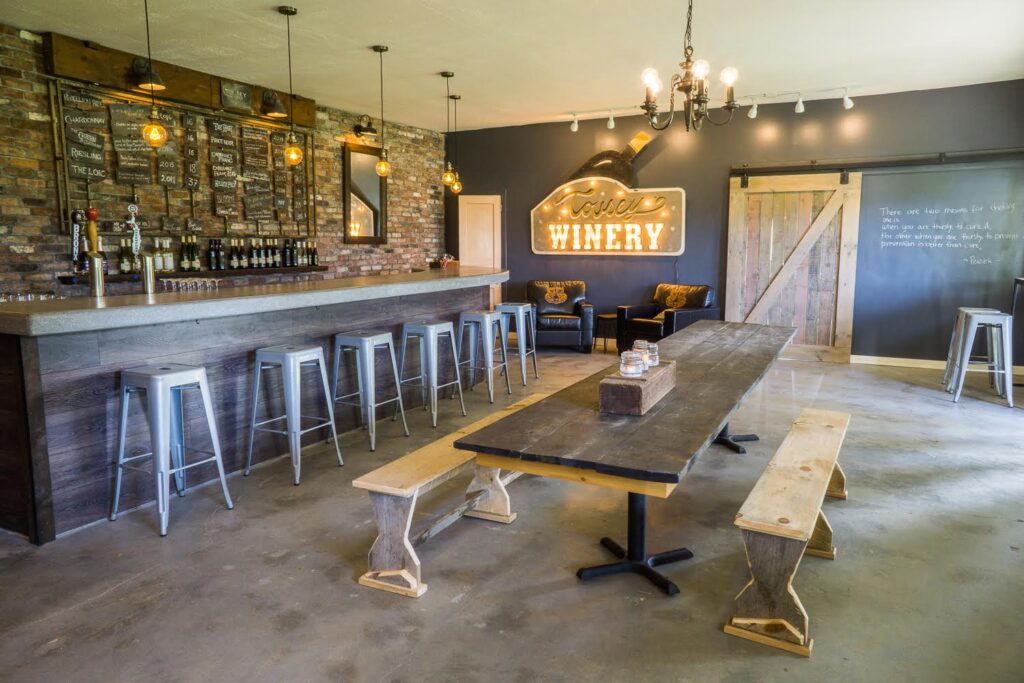
Of course, you’ll find terrific local wines. But there are also the personal stories, and the lovely locations, and the exploration of your “back yard” that can yield such delights and surprises. Truly, you can’t go wrong visiting any of the wineries in the Capital Region. And make sure to explore the rest of the Hudson Valley, and all of New York’s world-class wine regions.
Here are my top recommendations (in alphabetical order):
Altamont Winery, Altamont
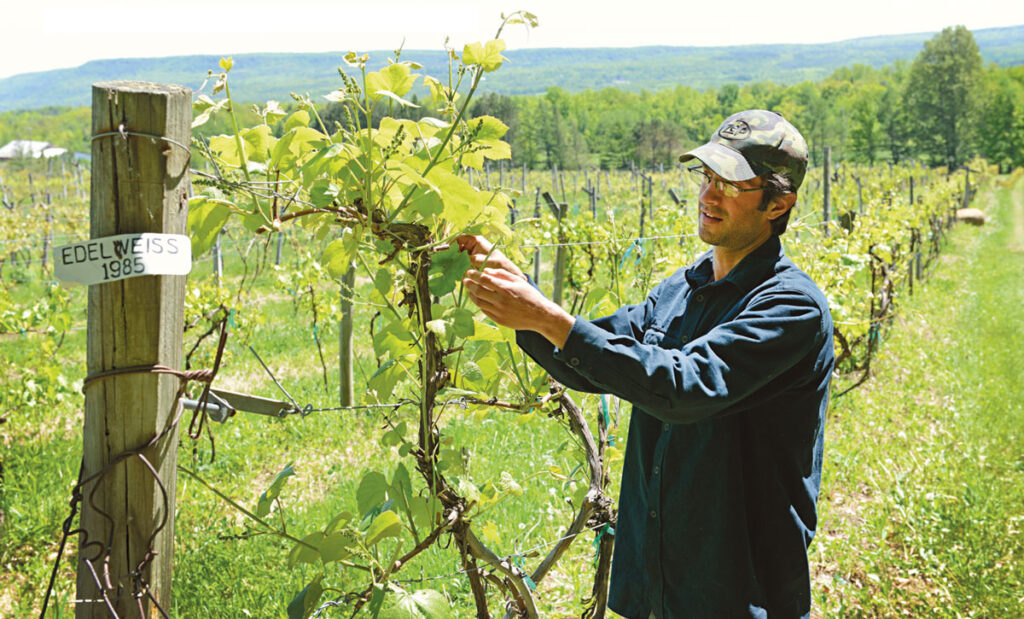
I first met Mike DeCrescenzo, owner of Altamont Winery, at the Schenectady Farmer’s Market, about ten years ago. Intrigued with what was growing on his family’s large farm west of Albany, I took a visit. Knowing nothing about the area, I was skeptical about what kind of grapes could be growing in Altamont. Happily, my expectations were shattered – the vineyard is huge! It was originally planted by Larry Grossi, who passed in 1999. In 2006, Mike’s dad, Louis, decided to take it on, equally trusting what the 26-acre piece of land could yield.
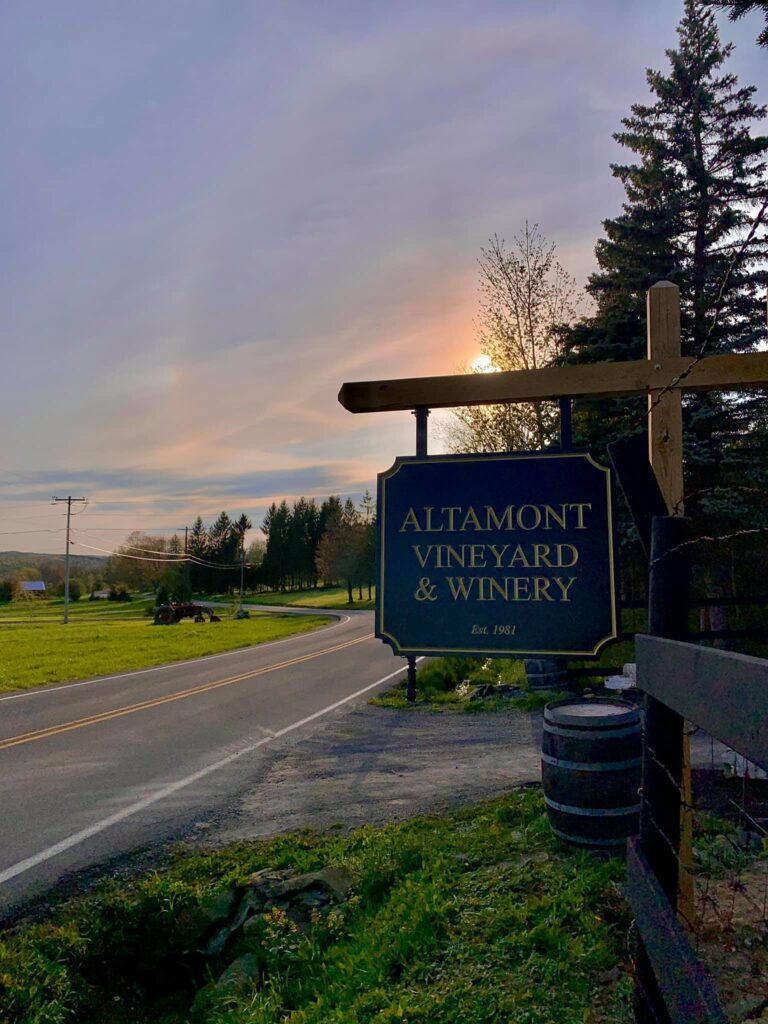
There are many varieties thriving on the site, and the DeCrescenzos are passionate about their craft. Visiting Altamont is like reconnecting with a family member. The experience is friendly, welcoming, casual. The wines are home-grown and homemade. Be sure to try the Sirius, a dry white made with St. Pepin and Cayuga; the Leon Millot – a dry red made from this French-American hybrid; the semi-sweet Rose made from a blend of the grapes; and the others, too! Make a day of it. Learn more at www.altamontwinery.com, follow and like them on Facebook and Instagram, and visit at 3001 Furbeck Road, Altamont, NY.
Galway Rock Vineyard and Winery, Ballston Lake
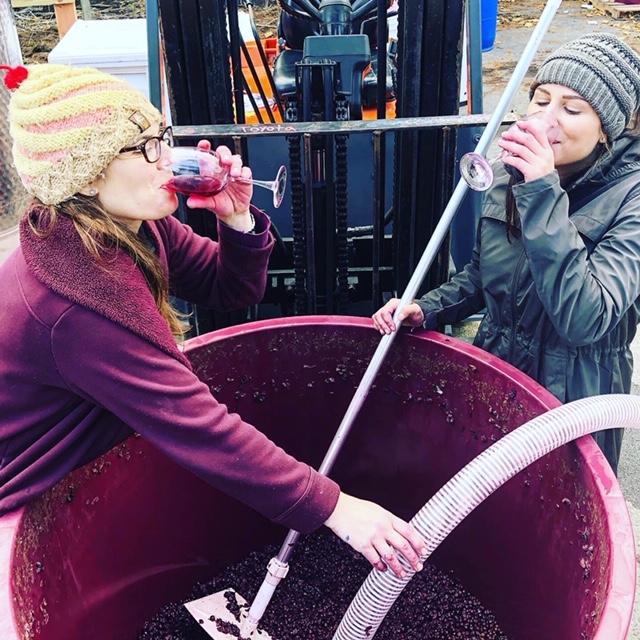
Kate Soldani is the brains – and the brawn – behind Galway Rock Vineyard & Winery in Galway, New York. She started the winery in 2014, inspired by the garagiste movement of fine wine making (small-scale entrepreneurial wine-makers, who do not adhere to the traditions of wine-making). In under a decade, Kate has launched three signature brands with dedicated followers -– Galway Rock, Robinia Hill, and Saratoga Sparkling. The result is a range of white, red, rose, and sparkling wines to please any palate.
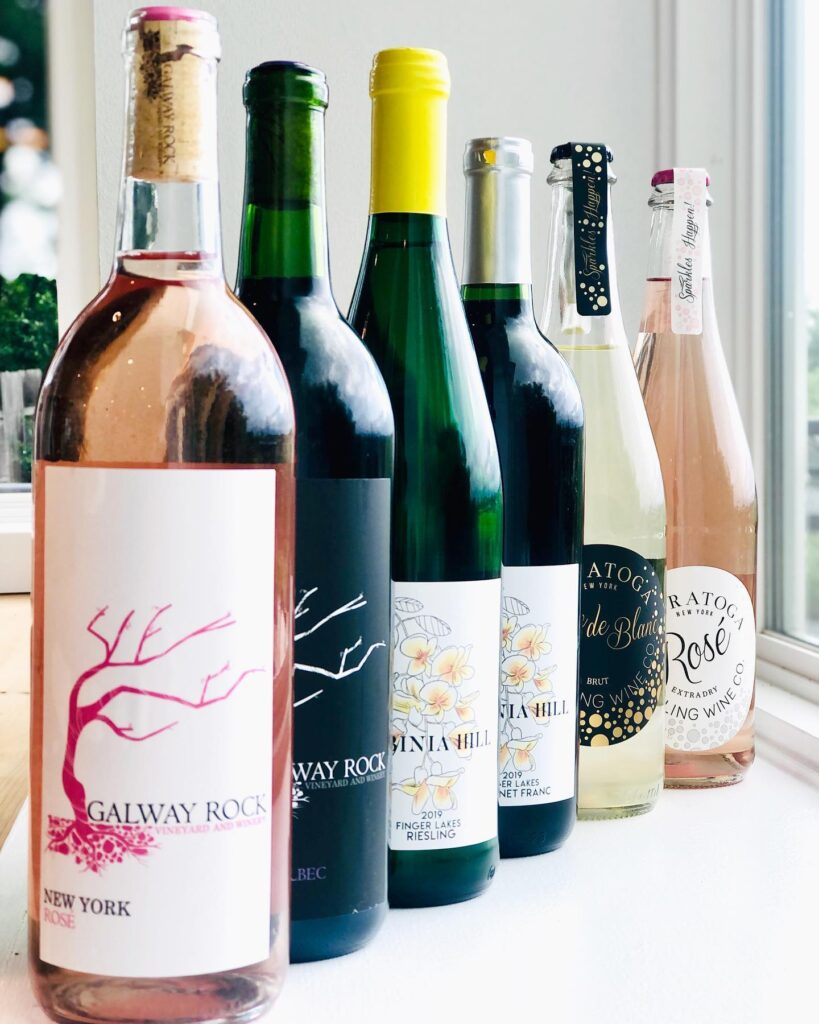
A visit to the tasting room is as creative and uplifting as Kate’s wines, offering a flight of six wines, or a signature “mimosa tower” tasting. What’s better than a tower of bubbles?? Hang out on the tasting room’s sunny patio with a specially prepared cheese board. Try the beautifully balanced Galway Rock Merlot-Malbec blend that’s full of delicious dark fruit notes. The Robinia Hill Riesling unfolds with apple and pear notes. And, don’t miss the Saratoga Sparkling Moscato that tickles the palate and turns on the pleasure. Learn more at www.galwayrockwines.com, follow and like them on Facebook and Instagram, and visit at 988 Saratoga Road, Ballston Lake, NY.
Home Range Winery, Canaan
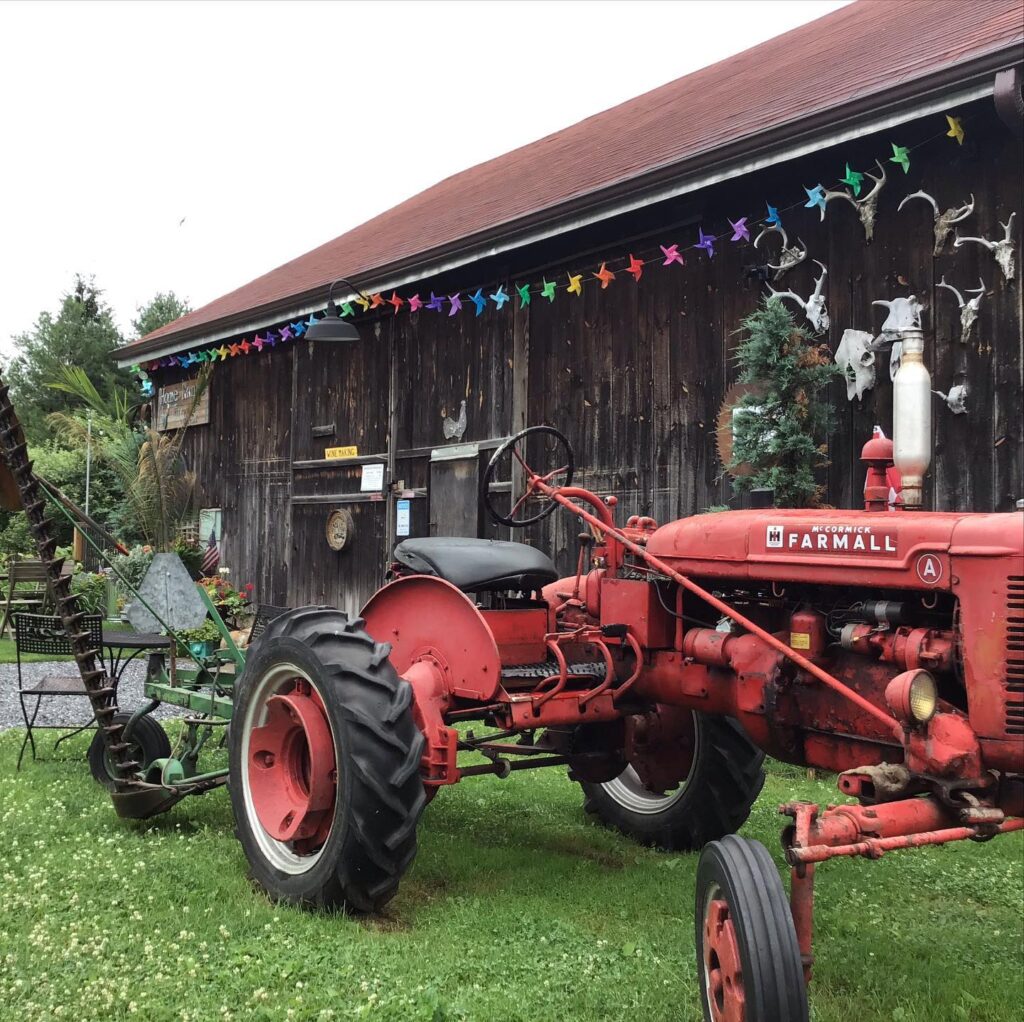
Inspired by Cape Cod (of all places!) wine making, Peter Bartlett and Susan Powell reconsidered what was possible on their farm in rural Canaan, New York. The 30-acre Flatbrook Farm – in the Bartlett family for generations — was already planted with Concord grapes, as well as raspberries, blueberries and blackberries. All are fruits that are suitable for wines. Susan was an amateur (and now a full-time) winemaker. Peter is a farmer who raised his three children on Flatbrook Farm. Why not follow their passions for growing and wine making and start a winery?
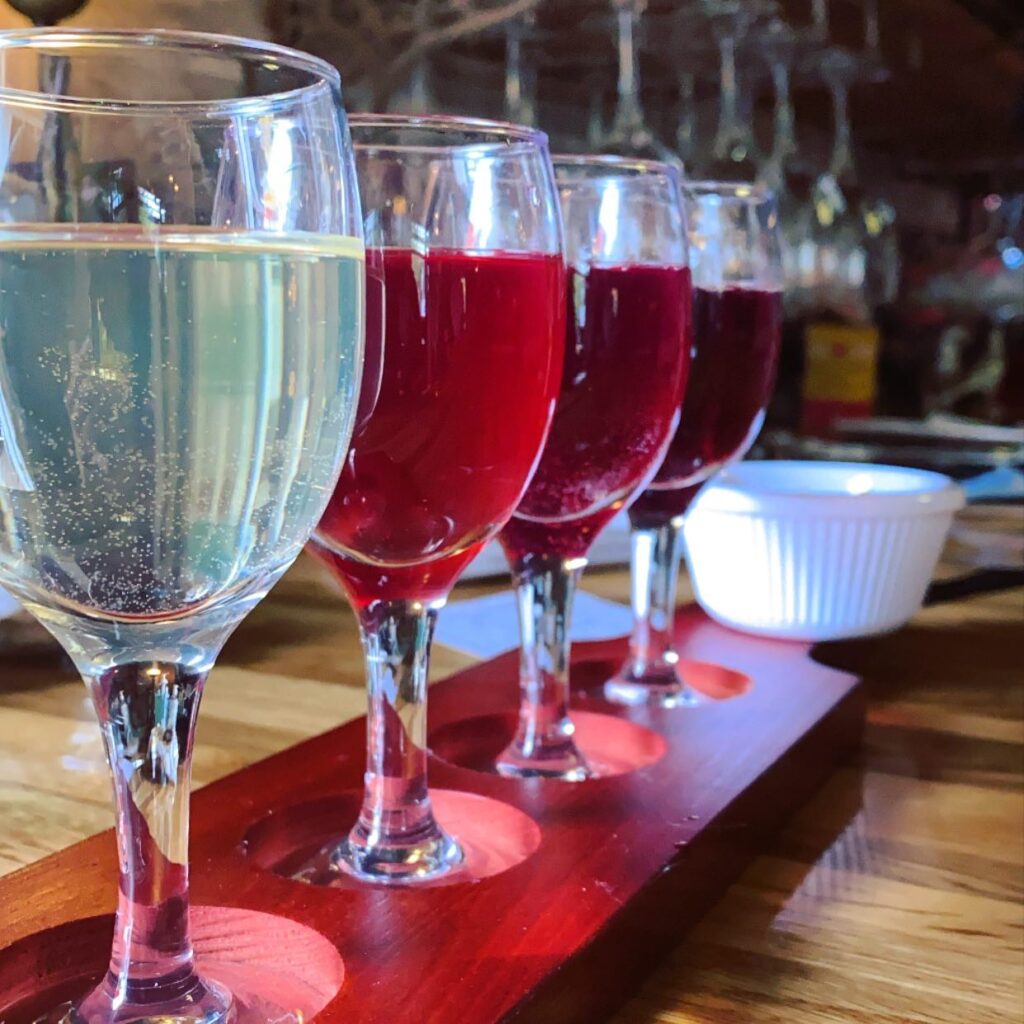
Thankfully for the rest of us, they did it. Their goal? To grow grapes suitable for a colder climate, and to make wines they would be proud to serve to friends and strangers alike. They planted Marquette and Baco for red wines, and Traminette and Cayuga for white wines. An old barn on the property was cleaned out and converted to the tasting room and winery. Guests are welcome to explore the farm and to bring a picnic.
The wines have names that reflect the couple’s connections to nature, too. There’s Calm After the Storm, an easy-drinking Cayuga; Big Buck, a signature red made with Marquette; Cold Snap, a luscious blueberry wine; and several others offering a range from dry whites and reds to sweeter wines. Learn more at www.homerangewinery.com, follow and like them on Facebook and Instagram, and visit at 146 Flints Crossing Rd., Canaan, NY.
Nine Lamb Farm Winery, Cambridge
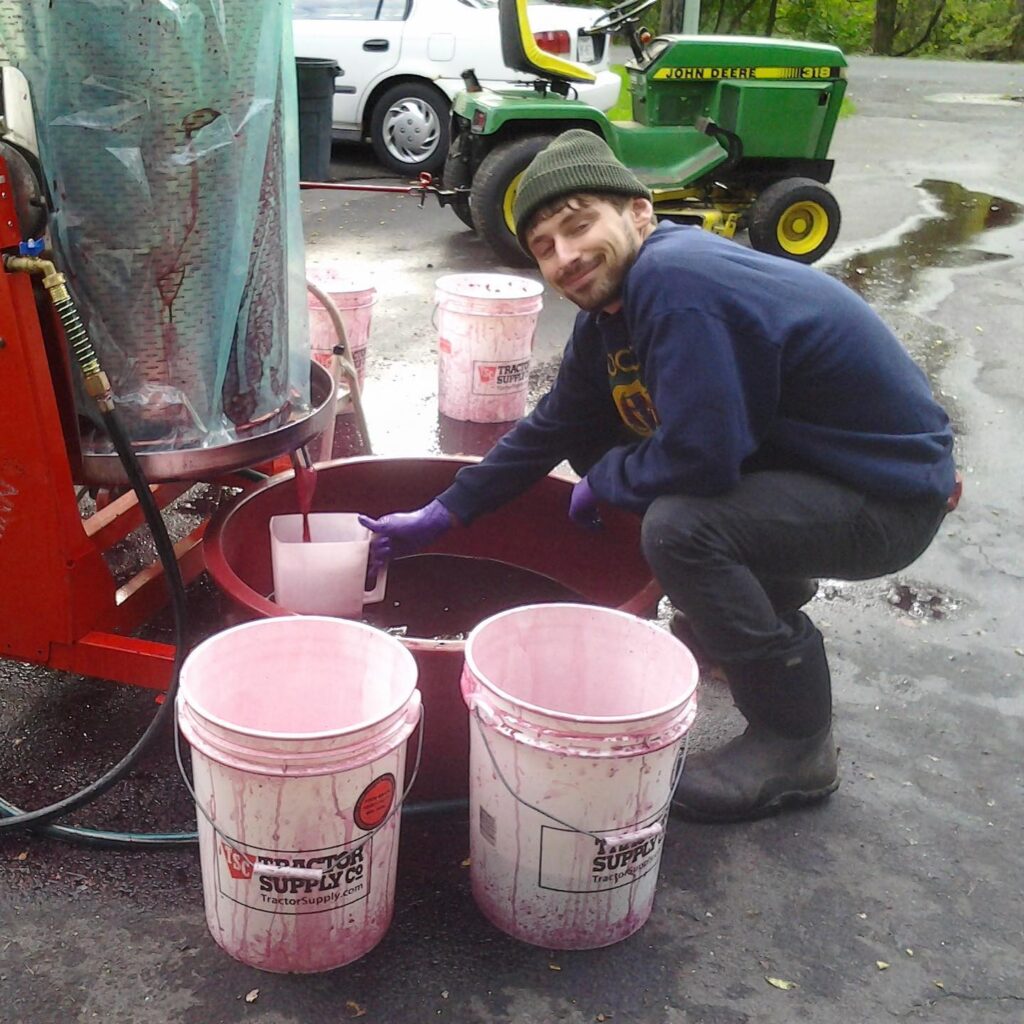
A relative newcomer on the scene is Nine Lamb Winery in Cambridge, NY, about 45 minutes northeast of Albany in some truly breathtaking countryside in Washington County. In 2016, the Bateman family planted six varieties of cold-hardy grapes on land that has been farmed for over 200 years. They’ve created two lovely, distinct brands. For the father/son Bateman team, South Dominion Vineyard represents tradition and heritage. And, their Nine Lamb Farm brand expands their inspiring vision. The Batemans say that Nine Lamb “intersects the realms of art, design, agriculture, and community so as to carry us forward into new life and a shared abundance born out of patience and forgiveness.”
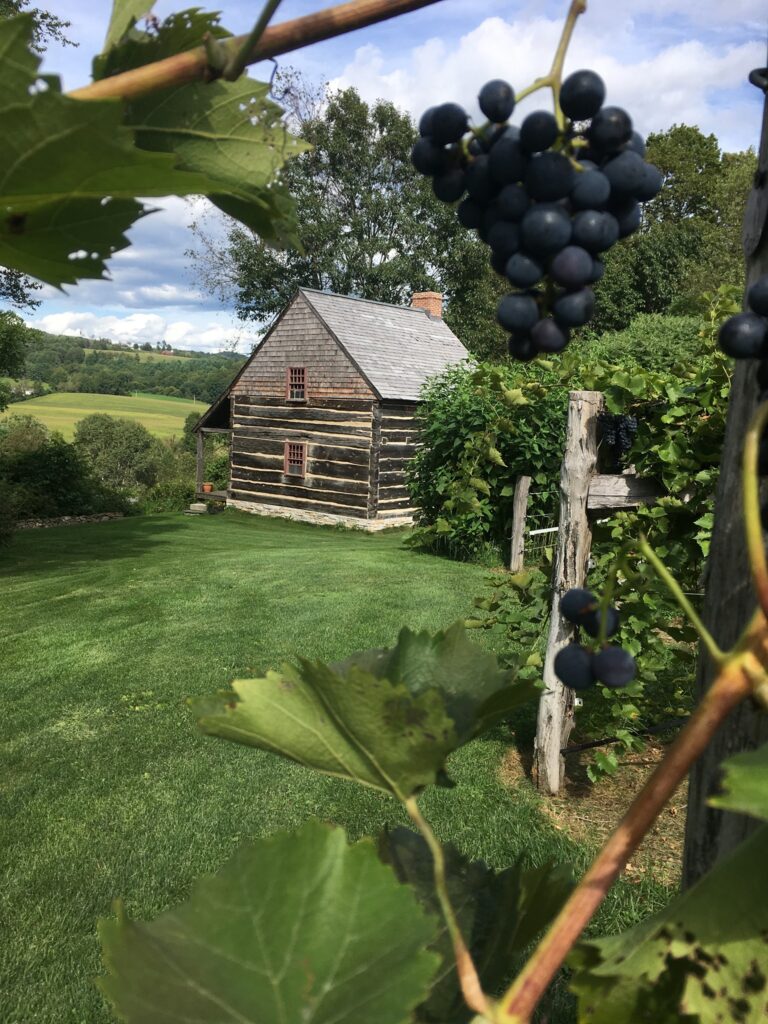
Take a ride and visit the Cambridge tasting room this fall, when colors are at their peak. Or, try the wines at the Troy Farmer’s Market on Saturdays between 9 am and 2 pm (which is where I discovered them). Their enthusiasm is as inspiring as their wines. The Dionné (South Dominion brand) is a big, dry, oak-aged red with ripe berry notes and some spice on the finish. Learn more at https://www.facebook.com/ninelambfarm, follow and like them on Facebook and Instagram, and visit at 166 Brownell Road, Cambridge, NY.
Tousey Winery, Germantown
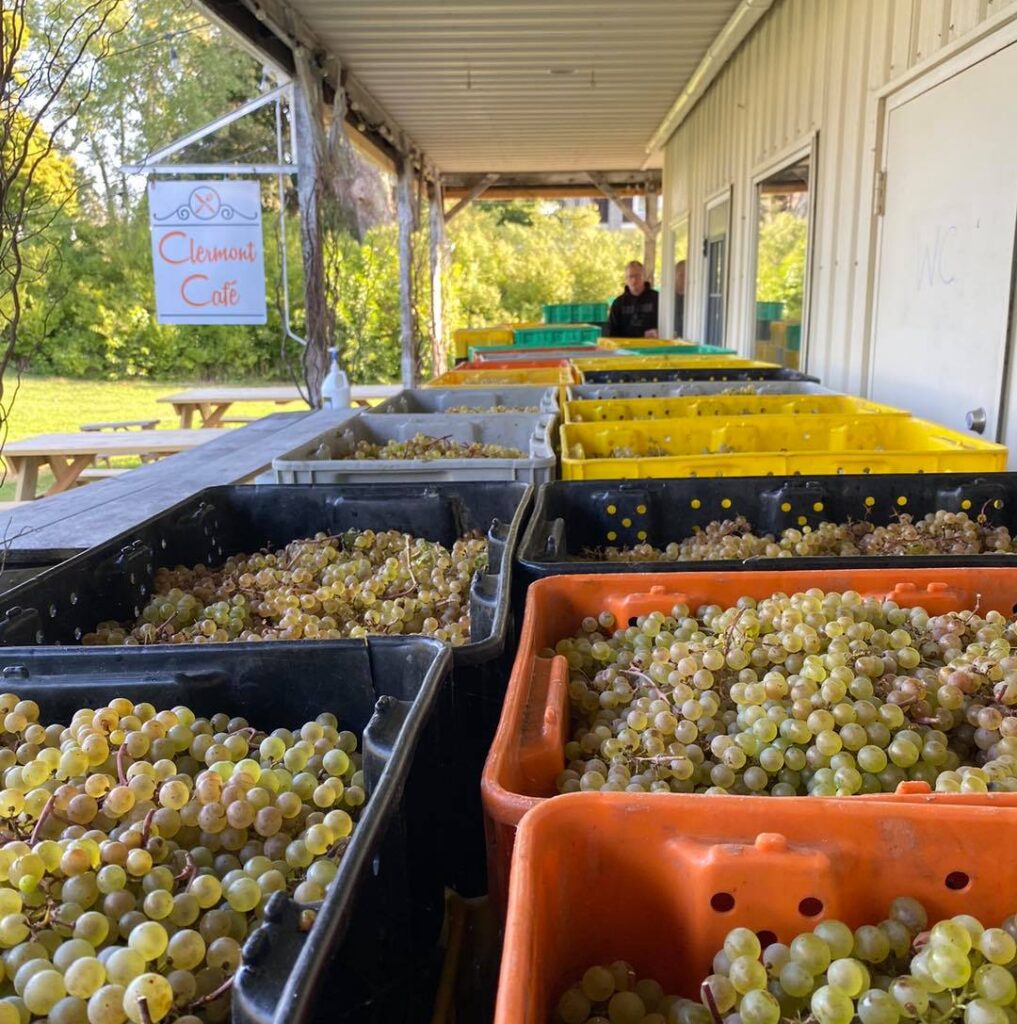
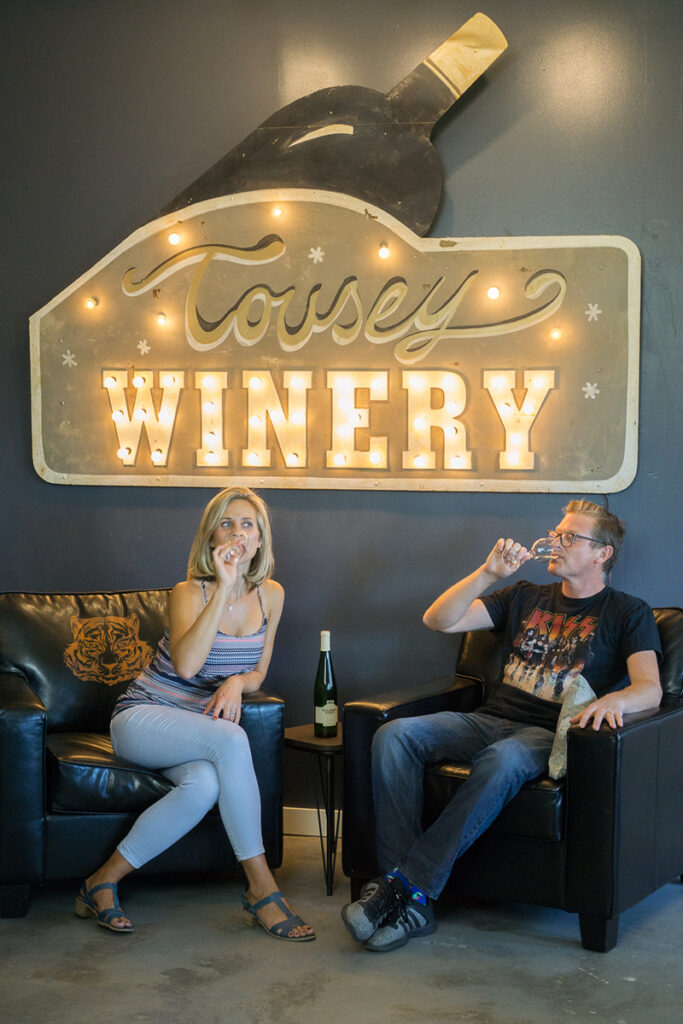
Everything about Tousey Winery is quirky and cool, from the unusual tasting room along Route 9 between Columbia and Dutchess Counties, to the names of the wines. That’s because the owners, Ben and Kimberly Peacock, are quirky and cool themselves. Ben is English and Kimberly is Scandinavian, and they share a deep love of fine wine. When they decided to settle in Germantown and start a winery, they went all in. That was back in 2008. Today, over a decade later, their wines are trend setters in the region and the state.
Tousey offers traditional wines like Riesling and Cabernet Franc. Additionally, they have blends like their off-dry Queen of Clermont, and the fun and friendly red blend, Riot. They make a Sauvignon Blanc called Hygge that is as clean and beautiful as any SB out there. Plus, they’ve recently added sparklers to their line-up, including Naughtiness, a rose sparkler. And we all know that bubbles make everything better!
Tousey is also renowned for their cassis, a wine made from black currants. Tangy and sweet at the same time, it’s delicious on its own but is best when topped with sparkling wine to make a Kir Royale. That they do it all with three young children is even more impressive. Learn more at www.touseywinery.com, follow and like them on Facebook and Instagram, and visit at 1774 Route 9, Germantown, NY.
Other Don’t-Miss Spots
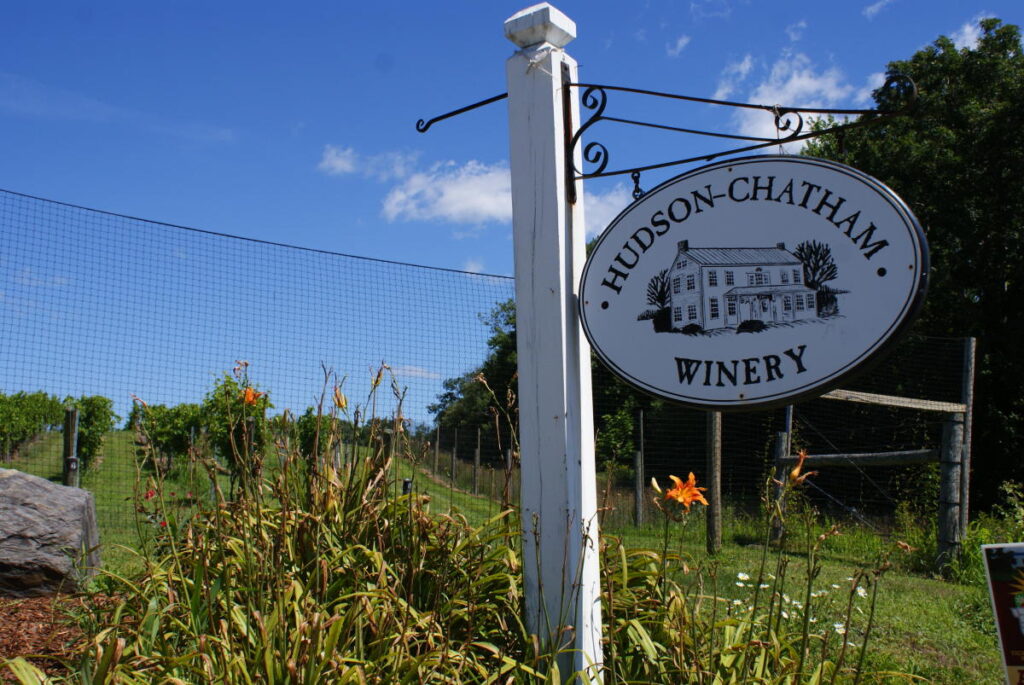
I would be remiss to not mention a couple of others that are near and dear to me. Hudson-Chatham Winery, Columbia County’s first winery, is alive and well and making wonderful wines under the ownership of Steven Rosario and Justin Nickell. See where the Columbia County winery experience all started. (1900 State Rte 66, Ghent, NY). Another don’t-miss spot is Stable Gate Winery (12 Linda Way, Castleton-on-Hudson, NY). This female owned and operated vineyard was founded by Valerie Feldman. Her young and forward-thinking perspective on land and relationships shines through everything she does.
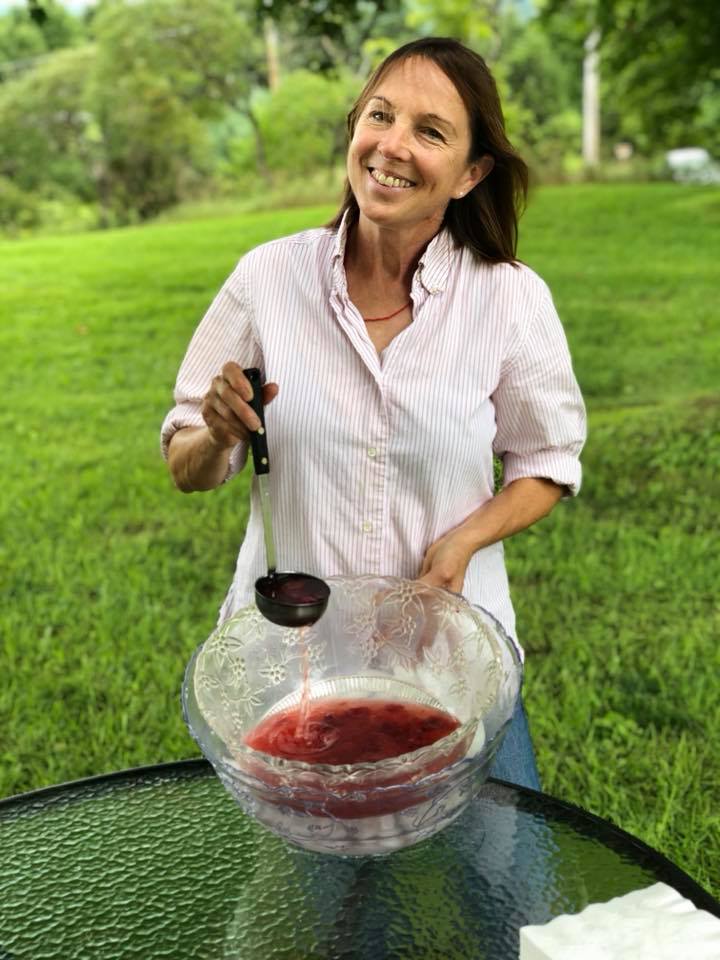
Dominique DeVito started Hudson-Chatham Winery with Carlo DeVito and their boys, Dawson and Dylan, in 2007. Today Dominique is a Wine Manager at Exit 9 Wine & Liquor Warehouse in Clifton Park, where she has a world of wines to play with. She writes a monthly feature for Main Street magazine as well as a “wine of the week” for the magazine’s website and social media. Find it at www.mainstreetmag.com.
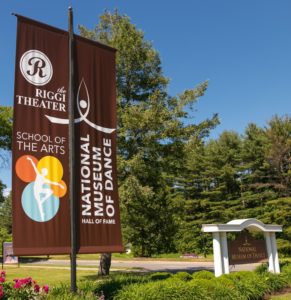
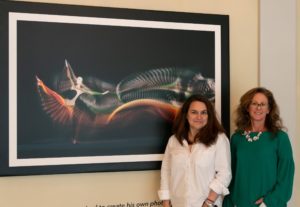 We visited with Museum Director Laura DiRado and Curatorial Associate Lisa Kolosek ahead of the July 11 ACE Mixer at the Museum to give Alliance members an inside look at how to balance creativity and business restrictions to maximize the visitor experience. Interestingly, neither Laura nor Lisa had a dance background prior to joining the Museum staff: Laura for many years worked as a freelance graphic designer with a focus on interpretive site design for the National Forest Service and other clients before taking on her roles at the Museum, first as Exhibition Coordinator and Designer and most recently as Director; while Lisa is an art historian and writer with a Master’s degree in the History of Design and Curatorial Studies.
We visited with Museum Director Laura DiRado and Curatorial Associate Lisa Kolosek ahead of the July 11 ACE Mixer at the Museum to give Alliance members an inside look at how to balance creativity and business restrictions to maximize the visitor experience. Interestingly, neither Laura nor Lisa had a dance background prior to joining the Museum staff: Laura for many years worked as a freelance graphic designer with a focus on interpretive site design for the National Forest Service and other clients before taking on her roles at the Museum, first as Exhibition Coordinator and Designer and most recently as Director; while Lisa is an art historian and writer with a Master’s degree in the History of Design and Curatorial Studies.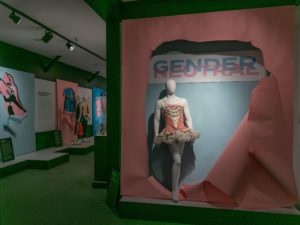 What would you share with Creatives about working at the Dance Museum?
What would you share with Creatives about working at the Dance Museum?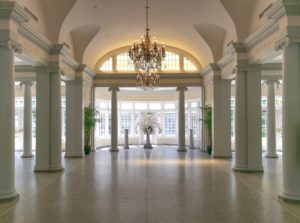 Does reporting to a Board of Directors and being on State property have an impact on the creative process?
Does reporting to a Board of Directors and being on State property have an impact on the creative process?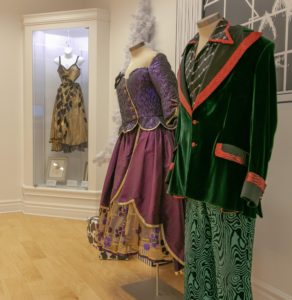 Since you had no dance affiliations, how did your background and experience help make you successful at the Museum?
Since you had no dance affiliations, how did your background and experience help make you successful at the Museum?